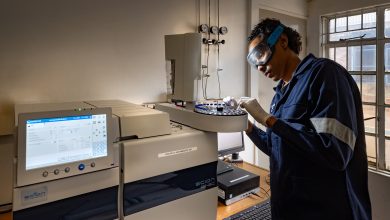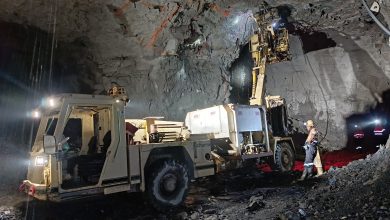
Green/sustainable mining market overview
Green technology in mining refers to the technologies and best practices that reduce carbon emis
sions from mining processes as well as the negative environmental impacts. It involves the utilization of minerals and metals that facilitate the switch to low-carbon technologies like solar or wind power. The best practices that will promote green mining throughout the forecast period are power reduction, fuel & maintenance reduction, emission reduction, and water conservation. The mining sector is generally driven cost reductions, and mining industries are now starting to implement newer, greener, and more environmentally friendly technologies.
During the forecast period, rising concerns about the environment, climate change, and its effects on the mining industry are expected to drive the green mining market. The mining industry consumes a lot of energy and resources. Numerous procedures are followed by mining corporations to decrease water use, cut down on energy and minimize their carbon emission. Several technologies, such as carbon capture and storage (CCS), can be used to reduce the ecological impact of mining activities on the environment. CCS involves capturing the gas at its source and transporting it to an underground source where it will be trapped and stored for many years to reduce the quantity of carbon dioxide discharged into the atmosphere as a result of mining operations.
Surface mining segment dominated green mining market

Ecosystem mapping
The green mining market, by mining type, is segmented into surface mining and underground mining Surface mining holds a major share as it is the more prevalent form of mining.
Underground mining offers many environmental benefits, such as the mining site can be reclaimed for other use after mining activities cease, greenhouse gases can be captured if suitable technologies are available, and production of a lesser volume of waste and tailings.
Based on technology, the green mining market is segmented into power reduction, fuel and maintenance reduction, emission reduction, water reduction, and other technologies. The different aspects and technologies adopted in each segment are mentioned below. The mining industry is expanding and has the ability to help countries meet their objectives for sustainable development. However, it is crucial for international mining companies to implement and use specific eco-friendly and sustainable practices, technologies, and innovations in order to reduce mining waste and promote ethical mining practices. This is because the concerns about climate change and the pollution caused mining activities are growing.
The ecological impact of mining activities on the environment can be minimized with the use of a number of technologies, including carbon capture and storage (CCS). To reduce the amount of carbon dioxide released into the environment a result of mining operations, CCS includes capturing the gas at its source and sending it to an underground source where it will be trapped and stored for many years. Reducing C02 emissions from mining and power generation operations is the primary driver for However, little to no CCS can be expected in the absence of incentives for such emission reductions. Carbon dioxide emissions from the use of fossil fuels would be significantly reduced if CCS were to be implemented in the mining and power generation sectors.
Ecosystem: Green mining market

Trends/disruptions impacting customers’ businesses
Mining companies are beginning to adopt new and greener technologies to promote the conservation of the environment and to keep a check on safety Issues. Factors such as the rising of commodities, decreasing productivity, policy changes, and social are important to drive green innovation in mining technology.
The mining industry a large consumer of energy and resources, which places the industry in a position of potential conflict with the government and local communities. The cost of energy, especially the price of electricity, has risen sharply, and the dependable supply of energy has been an alarming issue that the mining industry is trying to address. Various factors, including the declining ore grades, resource intensity, and the amount of waste generated per unit of resource, are expected to increase the associated environmental costs of mining operations. As a result, several well-established mining companies are following practices to reduce energy consumption in their operations, minimize the use of water, and lower their carbon footprint.
Countries with a long history of mining such as Australia, Canada, and South Africa, have started to document the huge environmental impacts of abandoned mines and are taking the necessary actions to clean up these abandoned mines (thus incurring huge public costs).
These countries have also started undertaking initiatives to adopt green mining practices. For instance, the Green Mining Initiative (GM’) is a pan-Canadian initiative designed to increase environmental performance and productivity reducing energy emissions and usage, improving mine waste management, and increasing mine health and safety. These factors are expected to impact mining companies and contractors. This, in turn, would shift the dynamics of process and equipment suppliers to the mining industry.
YC shifts in green mining market

Mining and mineral processing industries are improving energy efficiency to reduce expenses in the current economic conditions, as well to adhere to government policies on Energy Efficiency Opportunities (EEOs). Being unable to identify opportunities for energy reduction due to a lack of data on energy usage and data linking energy use to production is one of the major problems with EEOs.
Along with energy conservation, mining and mineral processing industries frequently have trouble anticipating their energy needs and are penalized when they fail to forecast the same. To reduce expenses and improve mining productivity, mining companies are implementing cleaner technologies. Technological developments in the fields of artificial intelligence, automation, and blockchain are starting to enter the mining industry in an effort to promote greater cost-saving and efficiency methods.
The mining industry focusing on innovative eco-friendly and sustainable technologies that reduce toxicity, power consumption, emissions, and water use. A recent report by Carbon Disclosure Project (CDP) shows that ahead Of COP26 (the most recent annual UN climate change conference), more governments will declare their intentions to require environmental transparency or to extend current regulations. This will be necessary to efficiently track of industries and nations toward their commitments to becoming net zero.






